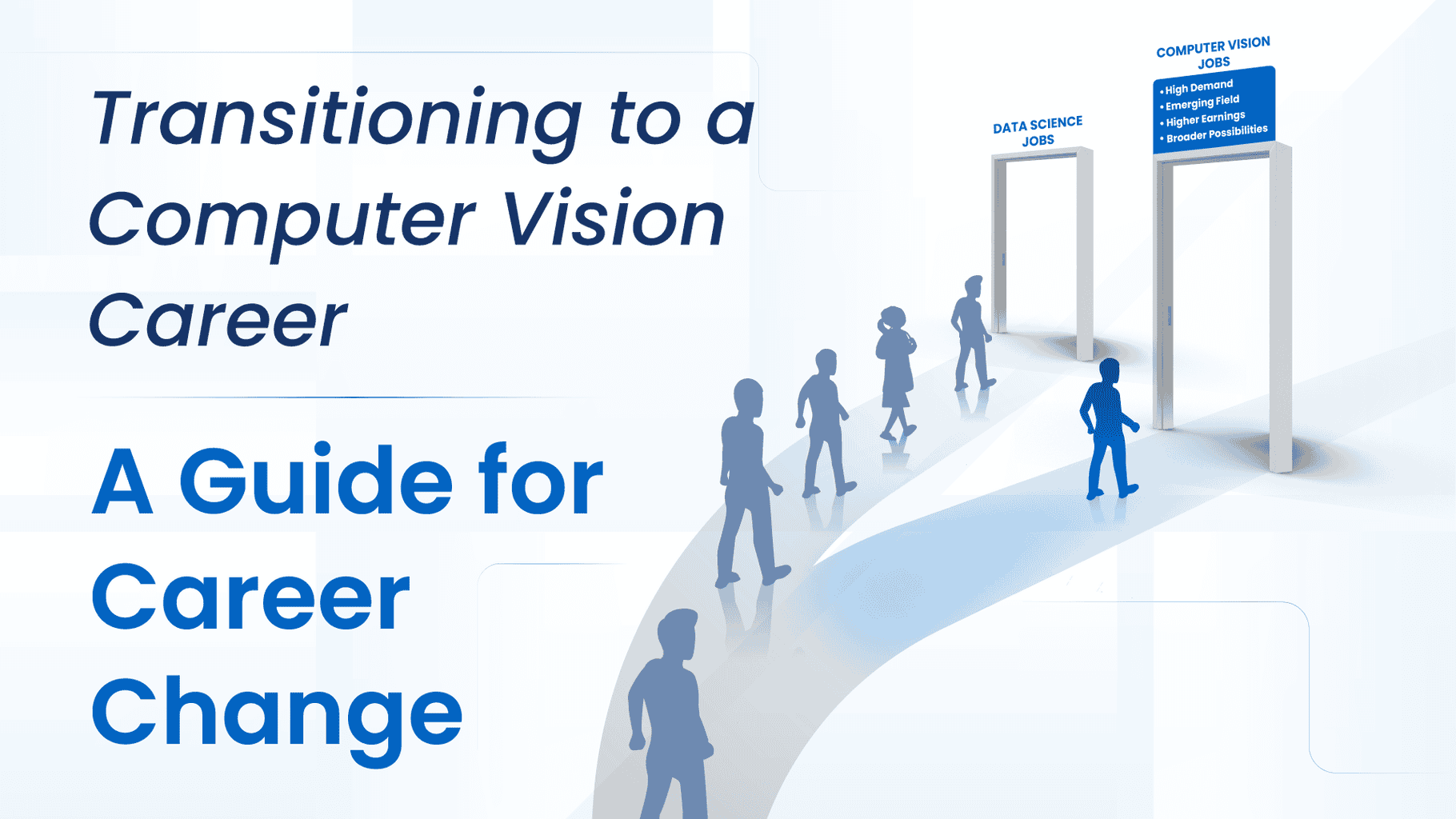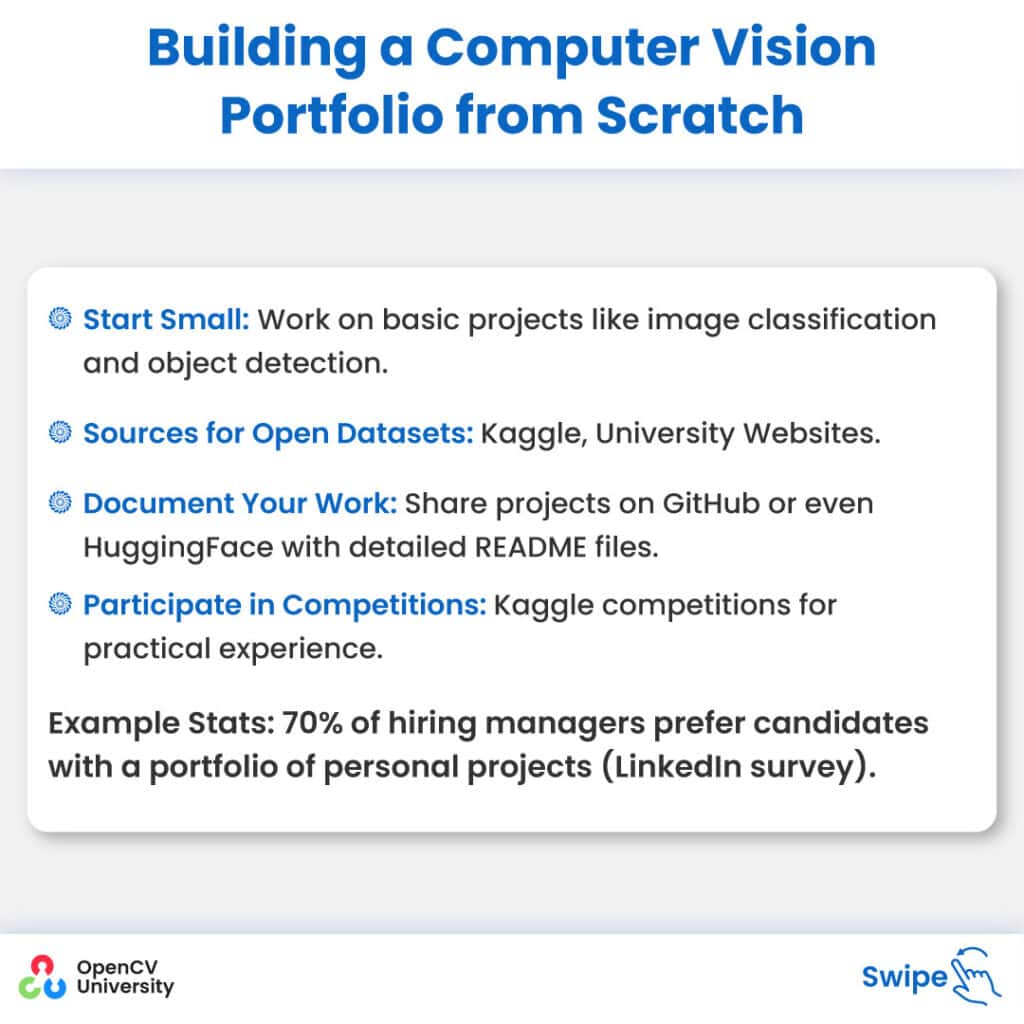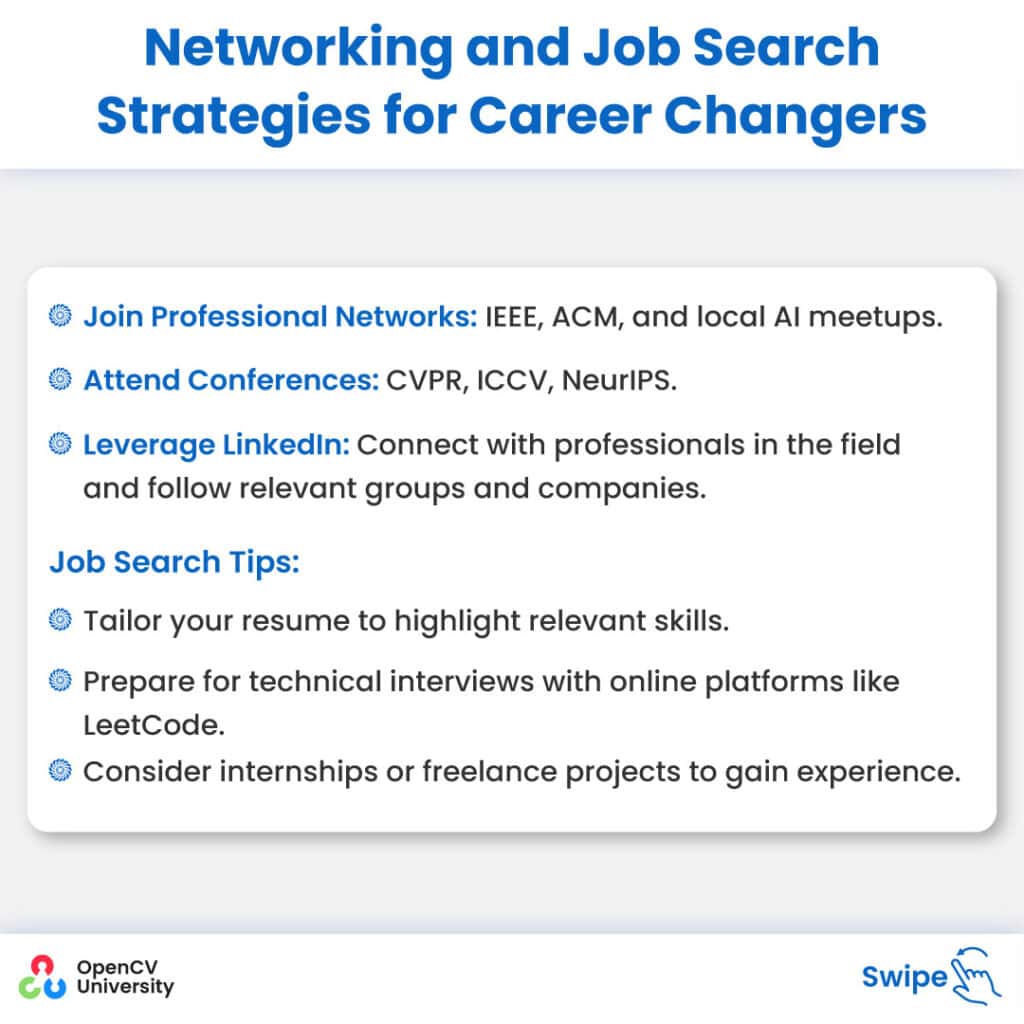
Changing careers can be a major decision, especially in today’s fast-paced tech world. Professionals are spoilt for choices like for example a computer vision career. If you’re considering a shift and want to apply your current skills in a new and exciting direction, this guide is here to help.
This article is a step-by-step resource to show you how to make the transition, from understanding the basics of computer vision to building the necessary skills and portfolio to get started. With this guide, you’ll know exactly what steps to take to make the change successfully.
STEP1️⃣: Identifying Transferable Skills for a Smooth Transition into Computer Vision
When transitioning to a career in computer vision, one of the most reassuring aspects is that many of the skills you’ve already developed can be useful. Let’s break down some key transferable skills:
✅Programming Skills: If you’re already familiar with languages like Python or C++, you’re on the right track. These languages are widely used in computer vision, particularly Python, due to libraries like OpenCV and TensorFlow. Even a basic understanding of coding can be a great starting point since many tutorials and projects will build on what you already know.
According to a survey from TealHQ, 60% of computer vision professionals come from a software engineering background, highlighting the demand for strong programming abilities.
✅Mathematical Foundation: Understanding concepts in linear algebra, calculus, and probability is vital in computer vision. These fields form the backbone of algorithms used in image recognition, object detection, and machine learning models. If you’ve ever worked with data analysis, finance, or engineering, you’ve likely applied these concepts already.
Don’t worry if you’re not an expert—there are plenty of beginner-friendly resources to help you brush up on the essentials.
✅Analytical Thinking: Problem-solving is at the core of computer vision. If you’ve worked in roles that required you to analyze data, troubleshoot, or think critically, you already have a valuable mindset. Computer vision often requires breaking down complex problems into smaller steps, which is very similar to tasks in other technical fields.
✅Domain Knowledge: One of the overlooked but important areas is domain-specific expertise. For example, if you have experience in healthcare, manufacturing, or transportation, your knowledge can help you apply computer vision solutions in those industries. Many employers look for candidates who can bring both technical skills and industry experience to the table.

STEP2️⃣: Learning Resources and Courses for Beginners
Transitioning into computer vision requires learning new concepts and tools, but fortunately, there are numerous accessible resources to help you get started. Here are some beginner-friendly options:
☑️Online Courses:
- OpenCV University: OpenCV Bootcamp for Beginners – A hands-on introduction to computer vision, covering key concepts with practical examples.
- Coursera: Computer Vision Basics – This course offers a well-structured introduction to the field, ideal for building foundational knowledge.
- Udacity: Computer Vision Nanodegree – A more in-depth option for those ready to commit to mastering the subject.
- Fast.ai: Practical Deep Learning for Coders – If you’re interested in the deep learning side of computer vision, this course offers real-world applications in a straightforward manner.
☑️Books:
- Deep Learning by Ian Goodfellow – A comprehensive resource for understanding the theory behind machine learning and computer vision.
- Learning OpenCV by Gary Bradski and Adrian Kaehler – A practical guide focused on one of the most important libraries in computer vision, ideal for hands-on learners.
☑️Websites and Blogs:
- OpenCV.org – The official website for OpenCV is a treasure trove of tutorials, documentation, and community support.
- Learnopencv.com – A blog filled with tutorials and practical guides on computer vision topics.
- Towards Data Science – A popular platform where professionals share insights, tutorials, and cutting-edge research in the field.

STEP3️⃣: Building a Computer Vision Portfolio from Scratch
One of the most important steps in your career transition is building a portfolio that demonstrates your skills. A strong portfolio shows potential employers that you can apply what you’ve learned to real-world problems. Here’s how to get started:
➡️Start Small: Begin with basic projects, such as image classification or object detection. These foundational tasks are relatively simple but show your ability to work with computer vision tools and datasets. You can find plenty of tutorials and datasets online to guide you through your first projects.
➡️Use Open Datasets: Data is key in computer vision, and thankfully, there are plenty of publicly available datasets. Websites like Kaggle and university repositories provide access to datasets ranging from simple images to complex 3D data. These datasets allow you to work on interesting problems while honing your skills.
➡️Document Your Work: It’s crucial to showcase not only the results of your projects but also how you arrived at them. Platforms like GitHub or Hugging Face are excellent for sharing your code with the world. Write clear README files, explaining your approach, the tools you used, and the results you achieved. This documentation shows employers that you can explain and communicate your work, which is a highly valuable skill in any tech field.
➡️Participate in Competitions: Getting involved in Kaggle competitions is another way to stand out. Competitions often present real-world challenges and give you the opportunity to apply your skills in a competitive environment. Many hiring managers look for candidates who have practical experience, and 70% of them prefer to see personal project portfolios when reviewing candidates, according to a LinkedIn survey.

Step4️⃣: Networking and Job Search Strategies for Career Changers
⬆️Join Professional Networks: IEEE, ACM, and local AI meetups.
⬆️Attend Conferences: CVPR, ICCV, NeurIPS.
⬆️Leverage LinkedIn: Connect with professionals in the field and follow relevant groups and companies.
⬆️Job Search Tips:
- Tailor your resume to highlight relevant skills.
- Prepare for technical interviews with online platforms like LeetCode.
- Consider internships or freelance projects to gain experience.

Summary and Next Steps
Transitioning into a computer vision career doesn’t have to be overwhelming. By focusing on your existing skills and leveraging the right resources, you can make this journey smoother and more manageable.
Here’s a quick recap of the steps to guide you forward:
▶️Review Your Transferable Skills: Reflect on the programming, analytical, mathematical, and domain-specific knowledge you already possess. These can form a solid foundation as you move into computer vision.
▶️Invest in Learning: Use beginner-friendly online courses, books, and other resources to build your expertise. Start with the basics and gradually explore more complex topics as you gain confidence.
▶️Build a Portfolio: Start working on small, manageable projects, document your process, and share your work on platforms like GitHub or Hugging Face. A well-rounded portfolio will be critical when applying for jobs.
▶️Network Effectively: Get involved in professional networks, attend industry conferences, and connect with professionals in the field. Building relationships and staying visible in the community will help open doors to job opportunities.

Accelerate Your Transition with Our Master Bundle – Make it Smoother!
If you’re looking for a structured and comprehensive way to fast-track your transition into computer vision, our Computer Vision + Deep Learning Master Bundle is the perfect choice. Tailored specifically for career changers, this bundle offers everything you need to build practical, industry-relevant skills in computer vision and deep learning.
Why Choose This Program?
- Designed for Career Changers: The curriculum focuses on real-world applications, bridging the gap between your existing knowledge and the demands of computer vision roles.
- Hands-On Learning: With projects and expert-led sessions, you’ll gain the practical experience that employers are looking for.
- Supportive Community: Join a network of fellow learners and professionals who can provide guidance and support throughout your career transition.
Enroll Today: OpenCV University – CVDL Master Bundle. Start your journey toward a rewarding career in computer vision.



